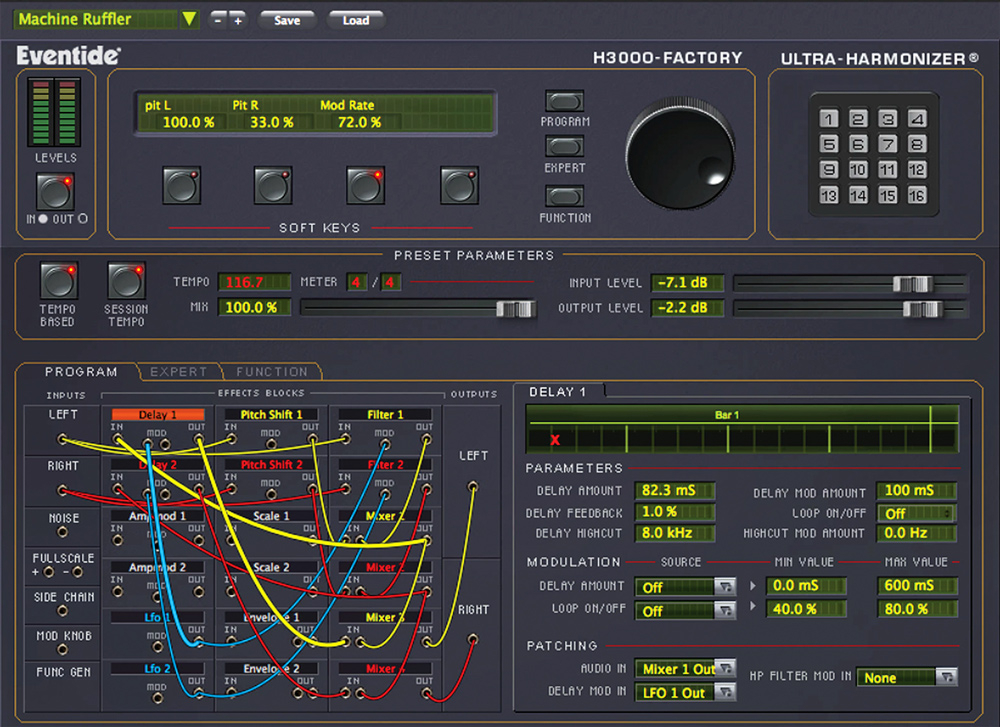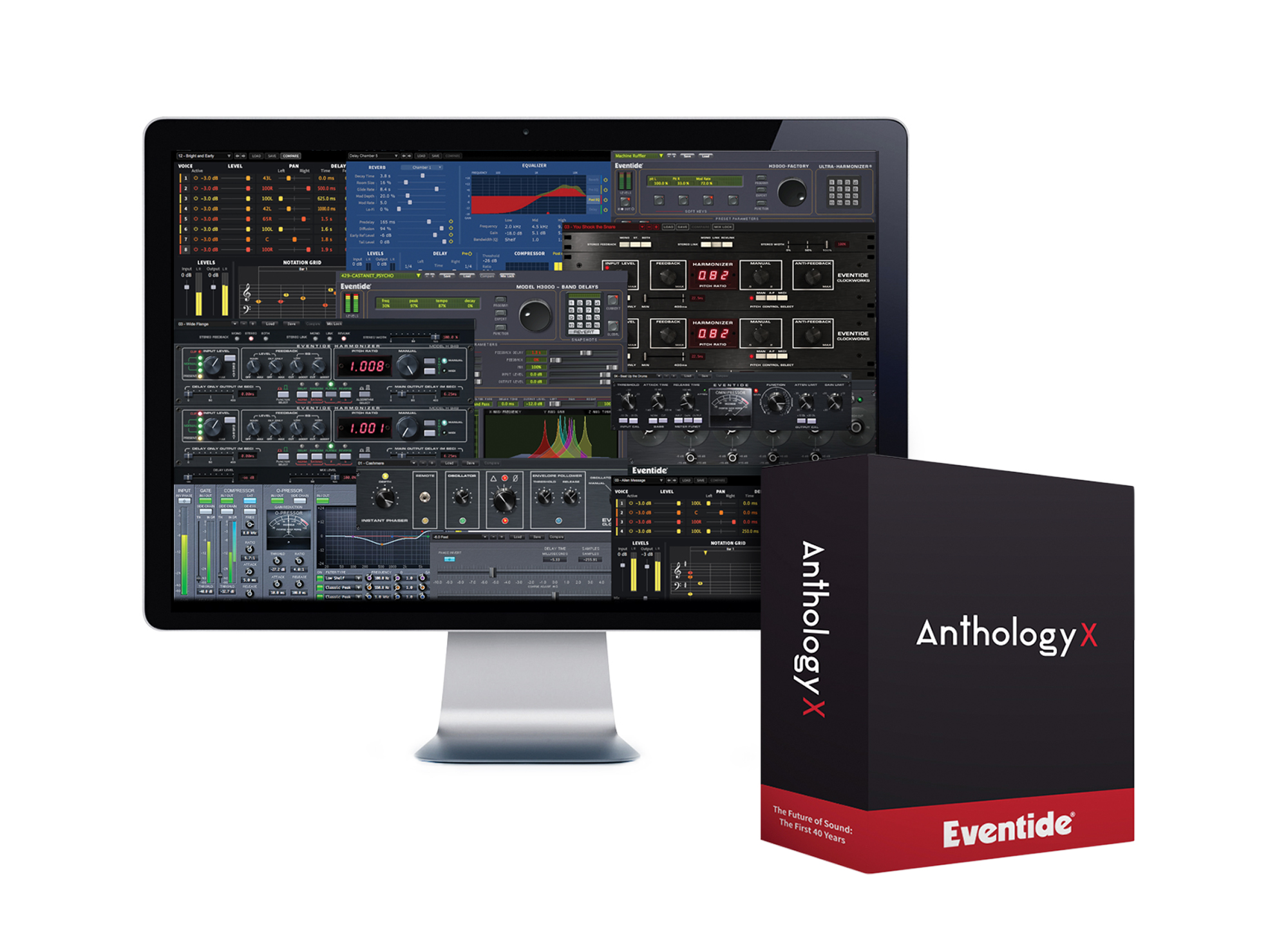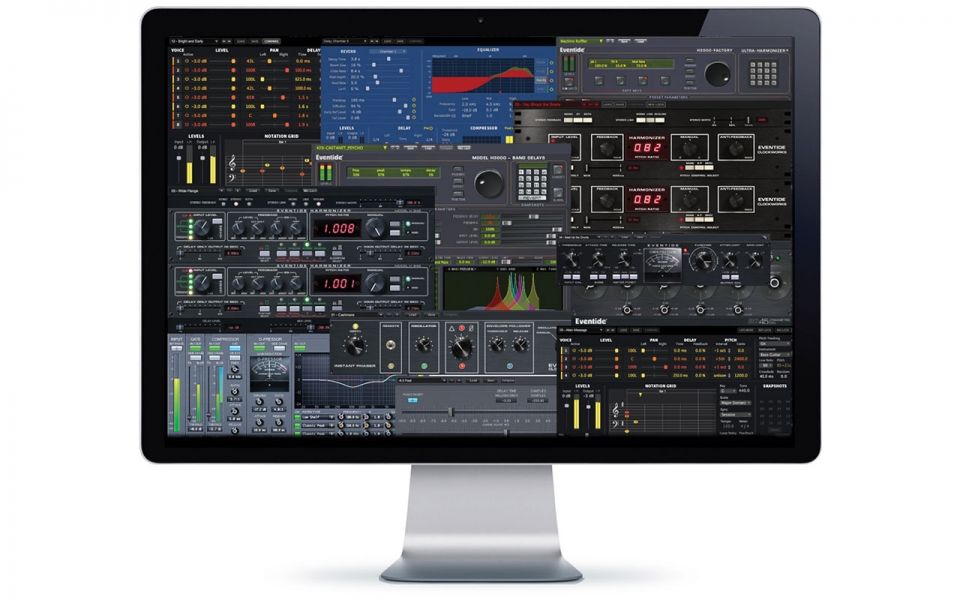The H3000 Factory is a DAW plug-in that re-creates several key algorithms from the H3000 Harmonizer® effects processor (rackmount unit). There are over 450 presets, along with 100 artist presets (and over 100 original presets from the H3000). Recreating a Legend The H3000 Factory is a re-creation of several key algorithms from the H3000 Harmonizer® effects processor. The plug-in provides a convenient modular interface to combine up to 18 effects blocks together in a practically limitless number of.
- Eventide H3000 Service Manual
- Eventide H3000 Plugin
- Eventide H3000 Factory Crack Filler
- Eventide H3000 Factory Crack Tool
The Eventide H3000 Multi-Effects Unit is a legend. Found in every major studio around the world, it’s one of the most highly used multi-effects units ever produced. Heard on thousands of songs from 1988 on, the H3000 is respected by many top engineers as the holy grail of effects.
Anthology X mac crack from Eventide is a plug-in suite that represents forty years of the company’s studio processors, including the H910, H949, H3000. Crack by openssh AU H3000 Factory: combines the pitch, delay, modulation, and filtering that made the original H3000 Ultra-Harmonizer a studio legend.
Why WE Care About It

The H3000 was a labor of love for Soundtoys founder & CEO Ken Bogdanowicz and Soundtoys engineer Bob Belcher back in their younger days working at Eventide – they designed and built this thing (well most of it, at least). Ken was the effects algorithm and preset designer, and created Eventide’s first intelligent pitch shifter. Bob designed the circuits, wrote most of the code and pulled all-nighters laying out circuit boards. Our good friend Dave Derr (owner, Empirical labs) designed the analog and converter sections. Gil Griffith (owner, Wave Distribution) evangelized the H3000 far and wide, getting this box into the hands of many thousands of top artists, engineers and recording studios.


The Machine
Simply put, the H3000 is a multi-effects monster. This is one of the reasons this piece is so loved. It does so much. From deep fat chorus, to rich verbs, to multiple pitch-shifting types (including the sought after MicroPitchShift), to outrageous swirling twisting soundscapes.
The H3000 went through a long line of versions and upgrades. The original H3000 had 11 effects algorithms and 100 presets focused on the Eventide staples of pitch shifting, doubling, chorus and delays and some basic reverb. That was followed by the H3000S (the “Steve Vai” model which added 48 presets designed by Steve), the H3000B (Broadcast version, which added TimeSqueeze, Patch Factory, a function generator for modulation, and sound effects designed for radio production – got a lot of love from shock-jock Howard Stern). The H3000SE added Vocoder, Band Delays, Instant Phaser, String Modeler, new Dense Reverb and MultiShift pitch shift algorithms. Brian Eno loved the H3000SE so much that he even sent a letter to the team calling it “the best-designed piece and most enjoyable piece of equipment [he’s] ever owned.” Later versions HS322 and HS395 added a sampling option board designed for “flying in” tracks recorded on analog tape.
The Plug-ins
While still at Eventide, Ken and Bob moved on to design the DSP4000 (the next generation Harmonizer), Ken started a side business, Crescent Engineering, whose first product was a “plug-in” for the H3000 called Mod Factory which he advertised in the back pages of Mix Magazine. Mod Factory was an amazing modular effects system capable of creating some stunning dynamic effects. Eventide eventually licensed Mod Factory from Ken to create yet another H3000 spin-off, the H3500 and H3500B which included Mod Factory and the sampling option. The final two spin-offs were the H3000 D/SX and H3000 D/SE which added new collections of effects patches from top artists and producers.
Back then (and even now) the H3000 was a truly powerful creation. It wasn’t simple, and wasn’t cheap either, which kept it in the upper echelon of audio professionals and rich guitar players (back when huge guitar effects racks were cool). The H3000 D/SE was regarded as the first true all in one multi-fx processor. Apart from the standard verbs, chorus and delays, and apart from the Eventide staple of great pitch-shifting and trademarked harmony generation, it had some stuff you might not expect in an effects box, like 3D speaker- based spatial imaging, filters, vocoder, a 6 voice polyphonic synth, LFO with 19 waveforms, amazing modulation routing, and full MIDI control. Plus you could even add sampling to it.
Beyond being the studio standard effects unit, the H3000 also became the ultimate live guitar fx box. All the big names in guitar from that time period (and beyond) had one in their studio and in their road rack. It was a vital part of the signature sound of some of the greats like Steve Vai, Van Halen, The Edge and Richie Sambora and Brian Eno.
The Next Phase
Crescent Engineering (the company under which Ken created Mod Factory) evolved into Wave Mechanics, which eventually became Soundtoys, so we could take our ideas further. Soundtoys’ SoundBlender plug-in was the first pro multi-effects plug-in available for Pro Tools, and the closest you could get to the kind of creative effects found in the H3000.
To this day, we’re still inspired by the H3000 in many ways. Ken and the Soundtoys team love creating products with this kind of longevity – EchoBoy, Decapitator and the collection of Soundtoys plug-ins capture and carry forward the tradition of creativity and uniqueness that started with the H3000. Effect Rack, the crowning feature of our latest release, Soundtoys 5, takes cues from the original multi-FX platform in its ability to creatively combine individual effects.

Cheers to the H3000 development team and thank you to all the users and artists out there who keep us going.
Eventide H3000 Service Manual
The H3000 is a very complicated, extremely digital device. It uses three DSP processors and a lot of high-speed circuitry. Although there is nothing but common sense to try to stop you from troubleshooting the digital circuitry, please accept our assurance that it is very unlikely that anyone other than a very experienced technician who has worked on these units for many weeks with factory training will likely diagnose and repair subtle defects. Few people with these qualifications are found other than at Eventide. That being said, only a modest percentage of defects fall into this category. The majority of problems are mechanical ones, having to do with connectors rather than defective components. Other user-fixable problems typically involve the audio inputs and outputs.
Symptoms that are frequently caused by user-repairable problems
The following symptoms usually indicate a power connector problem - they typically occur anytime from turn-on to a few minutes later:
- The display backlight varies in intensity or flickers
- The bypass relay clicks without command or sporadically
- The display 'freezes' or flashes odd messages in non-English characters
What to do: Scrutinize all the internal power connectors for tightness, cleanliness, discoloration, or other problems. Tighten, reseat, clean, repair, or replace as indicated.

The display indicates, or you believe that the unit's memory and/or presets have been corrupted.
What to do: Reset the H3000 OS and presets:
- Depress and hold the FUNCTION key while you switch on power.
- Release the FUNCTION key.
- When the H3000 displays 'REMOVE ALL PRESETS?,' press the 'YES' softkey
- When the H3000 displays 'RESET THE OPERATING SYSTEM?,' press the 'YES' softkey.
The following symptoms may indicate other loose connections, typically EPROM chips not reliably in their sockets:
Eventide H3000 Plugin
- Some presets work, some don't
- Some presets are missing
What to do: Reseat any socketed components, especially the EPROMs. Exercise (remove and replace) other internal connectorized circuits.
The following symptoms may indicate defective in/out circuitry. This typically occurs due to previous bad connections to the outside world on which high voltages accidentally were present.
Eventide H3000 Factory Crack Filler
- One input (or output) works, one doesn't
- One output is very distorted or has a DC bias, the other is fine
- Other connections (e.g., MIDI) are intermittent or defective while the unit seems to be otherwise OK
What to do: Carefully look around the connector in question for burnt or cracked components or, in some cases, broken or charred PC traces. Replace or repair as indicated.
Eventide H3000 Factory Crack Tool
Intermittent problems that seem to be related to temperature, e.g., 'dies or gets noisy after being on for an hour,' are frequently caused by thermally intermittent components. Although these are very difficult to find (for us, too) by normal electronic troubleshooting procedures, there is a simple approach that sometimes can pinpoint the component. There are 'freezing sprays' available from many manufacturers that can be used tocool individual components. By judicious use of these products you can frequently isolate a bad component.